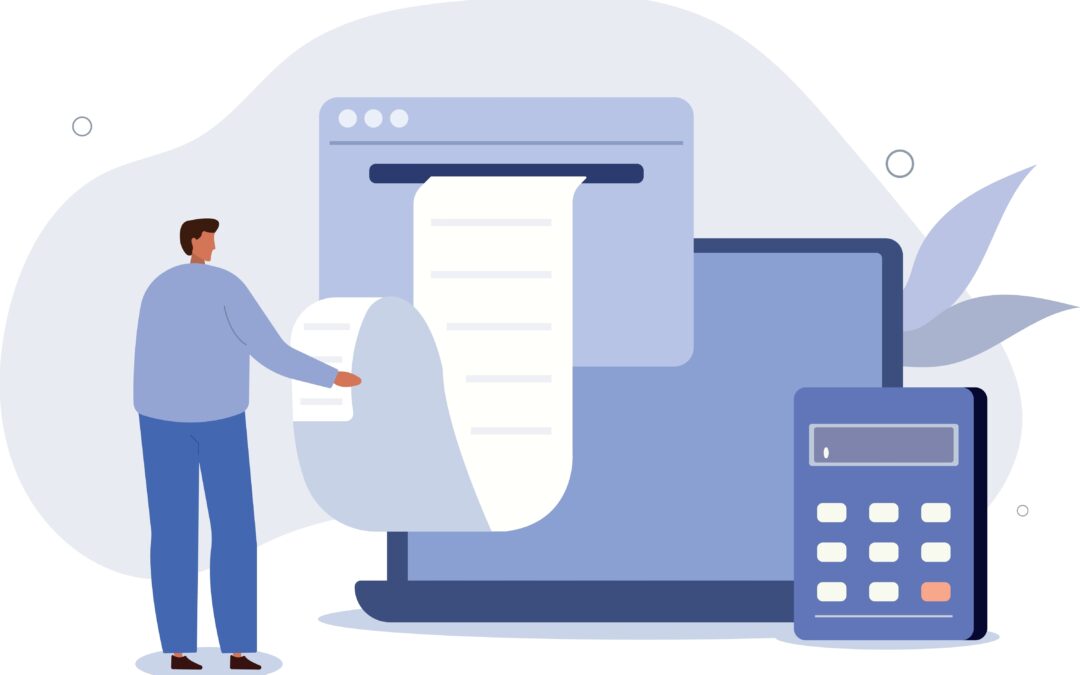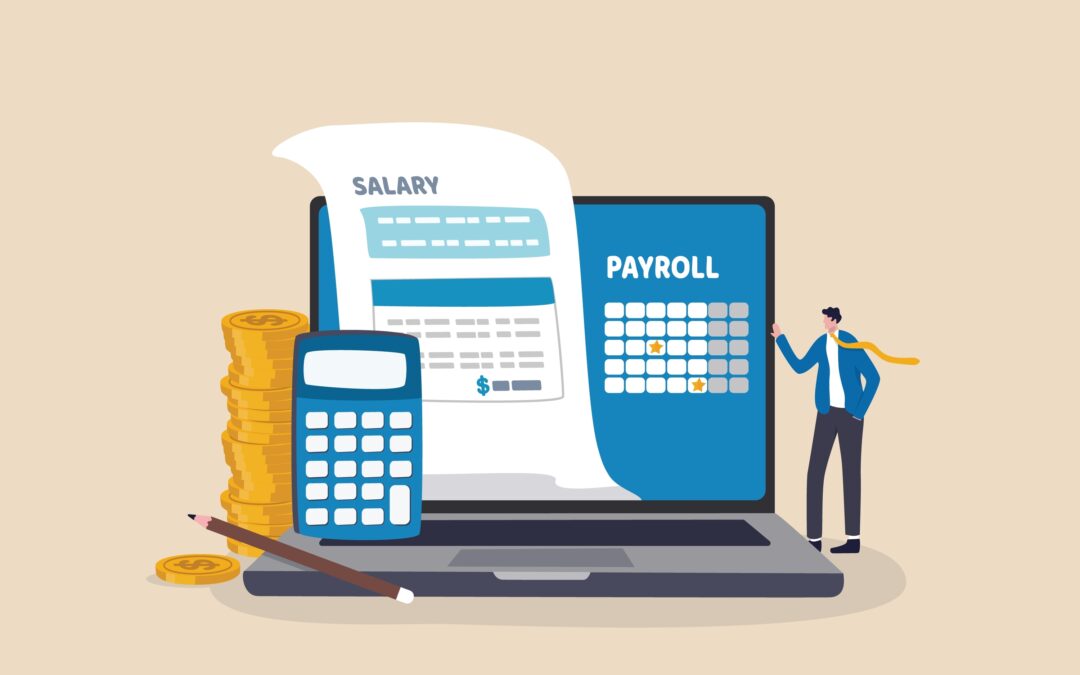Blog, Communication Strategies, Compliance, Industry Expertise
Facing an EEOC charge of discrimination can be daunting for any employer. However, with careful preparation and strategic response, you can effectively address the allegations and protect your company’s interests.
At Highflyer HR and Payroll, we understand the importance of responding to EEOC charges with diligence and professionalism. In this blog post, we’ll provide you with a step-by-step guide on how to respond to an EEOC charge of discrimination, ensuring that you’re equipped to handle this challenging situation.
1. Tell the Whole Story:
When responding to an EEOC charge, it’s crucial to provide a comprehensive account of the circumstances surrounding the employment relationship and the reasons for any adverse employment actions. Resist the temptation to offer minimal details and instead, give the agency all the facts to demonstrate legitimate business reasons for your actions. Demonstrate that there were legitimate business reasons for your actions.
2. Use Documentation:
Support your version of events with documentation dating from the time of the adverse employment action. Documents such as attendance records, reports, and email messages can help disprove the allegations and validate the company’s concerns.
3. Verify Response’s Accuracy:
Ensure that everyone involved reviews the response and verifies the accuracy of every statement. Inaccuracy could be exploited by legal adversaries, so it’s crucial to maintain credibility by ensuring the response is truthful and accurate.
4. Highlight Consistent Past Decisions:
Demonstrate that the decision was not motivated by unlawful discrimination by highlighting consistent past decisions involving similarly situated employees who are not members of the charging party’s protected class.
5. Remember, the Agency Doesn’t Know Your Business:
Provide details about your business that will help the agency understand your actions. Explain why the charging party’s performance concerned you, emphasizing factors that may not be readily apparent to an outsider.
6. Be Prompt and Cooperative:
Don’t delay in preparing your response. Anti-discrimination agencies may not grant extensions, and failure to respond promptly can result in adverse determinations.
7. Work with Legal Counsel:
Protect your company’s interests by working with legal counsel to investigate and prepare the response. Having an attorney review the draft before submission can provide valuable insights and ensure compliance with legal requirements.
8. Contact Your Insurer:
Notify your insurer promptly, as many employment-practices liability policies define claims to include discrimination charges. Failing to apprise the insurer could lead to denial of coverage for the charge and subsequent legal claims.
9. Preserve All Documents:
Collect and preserve all documents relevant to the charge, including electronic records like emails and Internet usage records. Failure to adequately preserve evidence could result in harsh sanctions from the courts.
Always Maintain Confidentiality. Handle information about the charge on a need-to-know basis, especially if the charging party is still employed. Encourage cooperation with investigators while ensuring confidentiality is maintained.
Responding to an EEOC charge of discrimination requires thorough preparation, attention to detail, and strategic planning. By following the steps outlined in this guide, you can increase the likelihood of a favorable determination and prevent further legal actions. At Highflyer HR and Payroll, we’re committed to helping our clients navigate the complexities of EEOC charges and safeguard their businesses. Contact us today for expert guidance and support in addressing EEOC charges and other HR challenges.

Compliance
Did you know that Federal Withholding Tax is a critical aspect of payroll management that affects every working American? In fact, according to the Internal Revenue Service (IRS), approximately 75% of taxpayers receive a tax refund each year, indicating the significant role of withholding tax in managing individual tax liabilities. Whether you’re an employer responsible for withholding taxes from your employees’ wages or an employee wanting to ensure accurate tax withholdings, understanding the ins and outs of federal withholding tax is essential.
What is Federal Withholding Tax?
At its core, Federal Withholding Tax refers to the money deducted from an employee’s paycheck by the employer to fulfill their federal income tax obligations. This pay-as-you-go tax system, mandated by the IRS, ensures that individuals contribute towards their federal tax liabilities throughout the year rather than paying a lump sum during tax season.
How Does Federal Withholding Tax Work?
The process of Federal Withholding Tax involves employers calculating the appropriate amount of federal income tax to withhold from each employee’s wages based on the information provided on the employee’s Form W-4. The Form W-4 includes details such as filing status, allowances, and any additional withholding instructions. Using IRS withholding tables, employers determine the precise amount to be withheld from each paycheck, helping employees meet their tax obligations.
Key Considerations for Employers
Accurate Employee Information: It is crucial for employers to emphasize the importance of accurate information on the employee’s Form W-4. Encourage employees to complete the form with precision and update it promptly whenever their personal or financial circumstances change. This ensures that the correct amount of federal income tax is withheld from their paycheck, preventing any discrepancies or issues.
Withholding Allowances: Employers play a significant role in helping employees understand the concept of withholding allowances. The number of allowances an employee claims on their Form W-4 directly affects the amount of federal income tax withheld from their wages. More allowances generally result in less withholding, while fewer allowances lead to higher withholding. By educating employees about this relationship, employers empower them to make informed decisions about their withholding preferences.
Additional Withholding: Employers should make employees aware of the option to request additional withholding if they anticipate owing more taxes or want to minimize their tax liability. This can be particularly useful for employees who have additional sources of income, such as freelance work or investment earnings. By understanding the process and benefits of additional withholding, employees can take proactive steps to manage their tax obligations effectively.
Tips for Employees
Complete Form W-4 Accurately: When filling out the Form W-4, employees should provide precise personal and financial information. This includes details like their name, Social Security number, filing status, and any additional withholding instructions. Accuracy in completing the form ensures that the correct amount of federal income tax is withheld from their paycheck, avoiding any potential under or over-withholding situations.
Update Form W-4 When Necessary: Major life events, such as getting married, having children, or experiencing changes in income, can impact an employee’s tax situation. It is crucial for employees to promptly update their Form W-4 whenever such events occur. By keeping the form up to date, employees can ensure that their withholding aligns with their current circumstances, preventing unnecessary tax surprises at year-end.
Understand the Impact of Allowances: Employees should be aware that the number of allowances claimed on their Form W-4 directly affects the amount of federal income tax withheld. Claiming more allowances generally reduces the amount withheld, while claiming fewer allowances leads to higher withholding. To determine the appropriate number of allowances, employees can consult resources provided by the IRS or seek professional advice, ensuring they optimize their withholding for their specific situation.
Key Takeaways
- Federal Withholding Tax is a crucial aspect of payroll management that affects every working American, with approximately 75% of taxpayers receiving a tax refund each year.
- Employees have the option to request additional withholding if they anticipate owing more taxes or want to minimize their tax liability.
- Employees should complete their Form W-4 accurately, promptly update it when necessary, and understand the impact of allowances on their tax withholding.
- Regular review of pay stubs and withholdings allows employees to ensure accuracy and make adjustments if needed.
- By complying with federal withholding tax requirements, employers avoid penalties, while employees ensure accurate and timely tax payments.
Federal withholding tax is a critical aspect of payroll management that both employers and employees should understand. By complying with federal withholding tax requirements, businesses can avoid penalties, while employees can ensure accurate and timely tax payments. Need more tax help? Check out our post on payroll tax compliance.

Compliance
Did you know that small businesses pay an average of $845 per year in IRS penalties due to payroll mistakes? That’s a lot of money that could be saved by avoiding common payroll errors. As an HR professional or small business owner, it’s essential to get your payroll right the first time. In this blog, we’ll cover the most common payroll mistakes and provide tips on how to avoid them.
Payroll is an integral part of any business, and mistakes can be costly. HR professionals and small business owners need to ensure they are following proper procedures to avoid penalties, compliance issues, and unhappy employees. In this blog post, we’ll provide you with the knowledge you need to avoid the most common payroll mistakes.
Today, we’ll be discussing the most common payroll mistakes that HR professionals and small business owners make and how to avoid them.
Misclassifying Employees
One of the most common payroll mistakes that businesses make is misclassifying employees as independent contractors. While it may seem like a simple mistake, misclassifying employees can have serious legal and financial consequences. Independent contractors are not entitled to the same benefits and protections as employees, and misclassifying an employee as a contractor can result in penalties, back taxes, and lawsuits. To avoid this mistake, make sure to properly classify all employees and contractors based on IRS guidelines.
Failing to Keep Accurate Records
Payroll records are a critical part of any business’s financial management. They document employee pay rates, hours worked, deductions, and taxes. Failing to keep accurate records can result in a host of problems, from underpaying employees to failing to file accurate tax returns. To avoid this mistake, invest in a reliable payroll software system that automatically tracks and records all payroll information.
Missing Deadlines for Tax Deposits and Filings
Payroll taxes must be deposited and filed on time to avoid penalties and interest charges. Missing deadlines can result in steep fines and even legal action. To avoid this mistake, establish a regular payroll tax deposit and filing schedule and stick to it. Make sure to also keep up with changes in tax laws and regulations to avoid any compliance issues.
Incorrect Calculation of Overtime Pay
Another common payroll mistake is incorrectly calculating overtime pay. Under the Fair Labor Standards Act (FLSA), non-exempt employees must receive overtime pay at a rate of 1.5 times their regular hourly rate for all hours worked over 40 in a workweek. Incorrectly calculating overtime pay can result in wage and hour violations and costly lawsuits. To avoid this mistake, ensure that all employees are classified correctly as exempt or non-exempt and that overtime is calculated correctly.
Overlooking Employee Benefits and Deductions
Employee benefits and deductions are an important part of the payroll process. These can include contributions to retirement plans, health insurance premiums, and wage garnishments. Overlooking these benefits and deductions can result in underpaid employees and non-compliance with tax laws. To avoid this mistake, ensure that all employee benefits and deductions are accurately accounted for in your payroll system.
Failure to Stay Up-to-Date with Employment Laws and Regulations
Employment laws and regulations are constantly changing, and failure to stay up-to-date with these changes can result in costly mistakes. For example, failing to comply with the Affordable Care Act (ACA) can result in steep fines and penalties. To avoid this mistake, make sure to regularly review and update your payroll policies and procedures to ensure compliance with all relevant laws and regulations.
Key Takeaways Summary:
-
Misclassifying employees can lead to costly legal issues.
-
Calculating overtime correctly is essential to avoid costly penalties.
-
Accurate record-keeping is crucial to staying compliant and avoiding fines.
-
Compliance with state and federal taxes is necessary to avoid costly penalties.
Avoiding payroll mistakes is critical for HR professionals and small business owners. By following proper procedures and understanding the common mistakes to avoid, you can save your company time, money, and legal headaches. Stay compliant and keep your employees happy by avoiding these common payroll mistakes. If your company still has payroll questions or concerns visit https://www.highflyerhr.com/contact-us/ today to see how we can make painroll painless!

Compliance, Guide
Did you know that small business owners spend an average of eight hours a month just on payroll processing? With compliance laws changing constantly, it can be tough to keep up. In fact, according to the Society for Human Resource Management, compliance with federal, state, and local laws is the top HR challenge for businesses.
As a small business owner or HR professional, payroll compliance is crucial to avoid costly penalties and legal issues. However, with so many laws and regulations to navigate, it can be overwhelming. That’s why we’ve put together this comprehensive guide to help you understand the basics of payroll compliance.
Federal Payroll Laws:
- Fair Labor Standards Act (FLSA): sets minimum wage, overtime pay, record-keeping, exemption status, and child labor standards for most employees in the private and public sectors.
- Federal Insurance Contributions Act (FICA): requires employers and employees to contribute to Social Security and Medicare.
- Federal Unemployment Tax Act (FUTA): requires employers to pay unemployment taxes, which go into a fund that provides benefits to eligible workers who lose their jobs.
State Payroll Laws:
- Minimum Wage: many states have their own minimum wage laws, which may be higher than the federal minimum wage.
- Overtime: some states have their own overtime laws, which may be more generous than federal law.
- Income Tax Withholding: most states require employers to withhold state income tax from employee paychecks.
- Unemployment Insurance: states have their own unemployment insurance programs, which employers must contribute to.
Local Payroll Laws:
- Paid Sick Leave: some cities and states require employers to provide paid sick leave to employees.
- Fair Workweek: some cities require employers to provide advance notice of work schedules and/or provide additional pay if schedules are changed at the last minute.
- Wage Theft Prevention: some cities require employers to provide notice to employees of their rights to minimum wage and overtime pay.
- Predictive Scheduling: some cities require employers to provide advance notice of schedules for hourly employees.
It’s important to note that these laws can vary widely from state to state and city to city. Employers need to be aware of the specific laws that apply to their business and ensure that they are in compliance. This may involve working with an HR consultant or payroll provider to ensure that payroll processing is accurate and that all necessary taxes and other deductions are being taken out of employee paychecks.
Tips for Ensuring Payroll Compliance:
- Stay up-to-date on changes in payroll laws: Payroll laws are constantly changing, so it’s important to stay informed about new laws or changes to existing ones. Subscribe to newsletters from government agencies, attend webinars or conferences, and stay in touch with industry associations to stay informed.
- Establish a payroll compliance checklist: Create a checklist of all the payroll tasks that need to be completed to ensure compliance. This should include things like verifying employee information, calculating taxes and deductions, and submitting payroll taxes on time.
- Train your payroll staff: Make sure your payroll staff is well-trained on all payroll laws and regulations that apply to your business. Provide regular training sessions and make sure they understand the importance of compliance.
- Use payroll software: Payroll software can help automate payroll processes and ensure compliance with payroll laws. Make sure you choose a software that is regularly updated to reflect changes in payroll laws.
- Perform regular audits: Regularly audit your payroll processes to ensure compliance. This can include reviewing payroll records, verifying employee information, and checking for errors or discrepancies.
- Seek professional help: If you’re not confident in your ability to manage payroll compliance on your own, consider hiring a professional to help. This could include a payroll consultant or a CPA who specializes in payroll.
By following these tips, you can help ensure compliance with payroll laws and avoid costly penalties and fines.
Key Takeaways Summary:
-
Payroll compliance is important for small business owners and HR professionals to avoid penalties and legal issues.
-
Federal, state, and local laws impact payroll compliance, and it’s important to be aware of the specific laws that apply to your business.
-
Staying up-to-date on changes in payroll laws, establishing a payroll compliance checklist, training your payroll staff, using payroll software, and performing regular audits can help ensure compliance.
-
Seeking professional help, such as a payroll consultant or CPA, can be an option for those who need additional support.
-
Accurate payroll processing and effective workforce management are key components of compliance.
Payroll compliance can be complex, but it’s essential for the success of your business. By understanding federal, state, and local laws, properly processing payroll, effectively managing your workforce, and engaging your employees, you can ensure compliance and avoid costly penalties. If your company still has payroll questions or concerns visit https://www.highflyerhr.com/contact-us/ today to see how we can make painroll painless!

Compliance
Did you know that small businesses pay an average of $845 per year in penalties for incorrect or late payroll tax filings and payments? Don’t let this be you. Read on for a guide on how to simplify your payroll tax processes.
Payroll tax filings and payments can be a headache for small business owners and HR professionals alike. With changing tax laws and regulations, it can be hard to keep up and ensure that your filings are accurate and timely. In this blog, we’ll break down the steps you need to take to simplify your payroll tax processes and avoid penalties.
In this blog post, we will guide HR professionals and small business owners on how to simplify their payroll tax filings and payments.
1. Understand Your Tax Obligations
Business owners need to understand their tax obligations to avoid errors and penalties. Start by researching which taxes you need to withhold and when to remit them. For example, federal income tax and Social Security tax have different deadlines for payment and filing. Familiarize yourself with federal and state tax laws, and stay up-to-date on any changes or updates. Additionally, you may want to consider consulting with a tax professional to ensure you’re meeting all obligations.
To fully understand your tax obligations, it’s important to keep up-to-date with any changes to tax laws and regulations. This means staying informed about new tax codes, deadlines, and other compliance requirements. You can stay informed by regularly checking the IRS website, attending tax seminars and conferences, or consulting with a tax professional. By staying informed, you can avoid costly penalties and minimize your risk of being audited.
2. Keep Accurate Records
Accurate record-keeping is essential for small businesses. Make sure you keep track of all employee information, including Social Security numbers, wages, and tax withholdings. Additionally, keep a copy of all tax filings and payments for at least four years, in case of an audit.
Consistent record-keeping is critical for payroll tax filings and payments. In addition to keeping track of employee information and tax withholdings, it’s important to keep detailed records of all payroll-related expenses, such as benefits and reimbursements. Make sure you have a system in place for tracking and organizing all payroll-related documents and receipts, such as timesheets, pay stubs, and tax forms. This will make it much easier to prepare and file your payroll tax returns
3. Remit Taxes on Time
Late or incorrect payroll tax payments can result in penalties and interest charges, so it’s important to remit taxes on time and in the correct amounts. You can also use the Electronic Federal Tax Payment System (EFTPS) to make federal tax payments, which is free and secure. Additionally, check with your state tax agency to see if they offer similar payment options.
To ensure you never miss a tax deadline, consider setting up automatic payments or reminders. This will help you stay on top of your payroll tax obligations and avoid costly penalties and interest charges. If you do miss a deadline or make a mistake on your tax return, don’t panic. You may be able to avoid penalties by promptly correcting the error and filing an amended return. Just be sure to take action as soon as possible to minimize the impact on your business.
4. Set Up a Payroll System
A payroll system can automate payroll calculations, tax withholdings, and reporting. Consider investing in payroll software, which can provide customized solutions for your business’s specific needs. Payroll software can also save you time and minimize errors, which can be costly in the long run. If you don’t want to invest in software, you can outsource your payroll to a third-party provider. This can also save time and money while ensuring that you’re meeting all tax obligations.
When setting up a payroll system, it’s important to consider the size and complexity of your business. If you have a small business with only a few employees, you may be able to handle payroll in-house using a simple spreadsheet. However, if your business is larger and more complex, you may want to consider investing in a more robust payroll software or outsourcing your payroll to a third-party provider. Look for a solution that offers features such as direct deposit, automatic tax calculations, and customizable reports.
Key Takeaways Summary:
-
Understand your tax obligations to ensure compliance
-
Keep accurate records for auditing purposes
-
Remit taxes on time to avoid penalties and interest charges
-
Set up a payroll system to automate calculations and minimize errors
Payroll tax filings and payments can be complicated, but by following these steps, HR professionals and small business owners can simplify the process and avoid costly penalties. Make sure to stay up-to-date on any changes to tax laws and regulations and invest in a payroll system to streamline your processes. With the right tools and knowledge, payroll tax filings and payments can be a breeze. Visit https://www.highflyerhr.com/contact-us/ or call (225) 930-8300 today to see how we can help!

Compliance, Time & Attendance
Mistakes are an unfortunate reality of doing business, but mistakes with payroll are different – and potentially extremely problematic. When you overpay an employee, you lose money. When you underpay an employee, you agitate him or her – and could potentially face legal repercussions. These instances occur more frequently with hourly employees but can happen to salaried workers as well. Here’s how to handle each situation.
According to the Fair Labor Standards Act (FLSA), employers that make a one-time overpayment to an employee can recoup the overpayment by deducting that amount from the employee’s next paycheck. (Keep in mind state regulations can differ.) But don’t go rogue. Keep your employees informed by following these 4 steps:
Determine how much you overpaid the employee during the pay period.
Contact the employee you overpaid and breakdown the situation (no need to panic)
Inform them you plan to deduct the overpayment out of their next paycheck
Ask them if this will cause a financial burden (remember, when an employee receives extra money–whether they notice it or not–they may spend it right away).(If yes, try to arrange installments that you both agree on. This will hopefully reduce the changes of resentment.)
(If no, simply make the deduction.)
If an employee has been underpaid, it needs to be fixed as soon as possible. Follow our step-by-step guide to working out how to fix an underpayment:
- Work out how long the employee has been underpaid
- Work out how much the employee was actually paid
- Work out how much the employee should have been paid
- Calculate how much the employee has been underpaid
- Backpay the employee
- Keep up to date with future wage increases
Because the number one reason for overpayment or underpayment is human error, you should consider automating your payroll process if you haven’t already. To learn more about how Highflyer can help your company avoid complicated payroll mistakes, call us today or visit https://www.highflyerhr.com/our-solution/payroll/.






